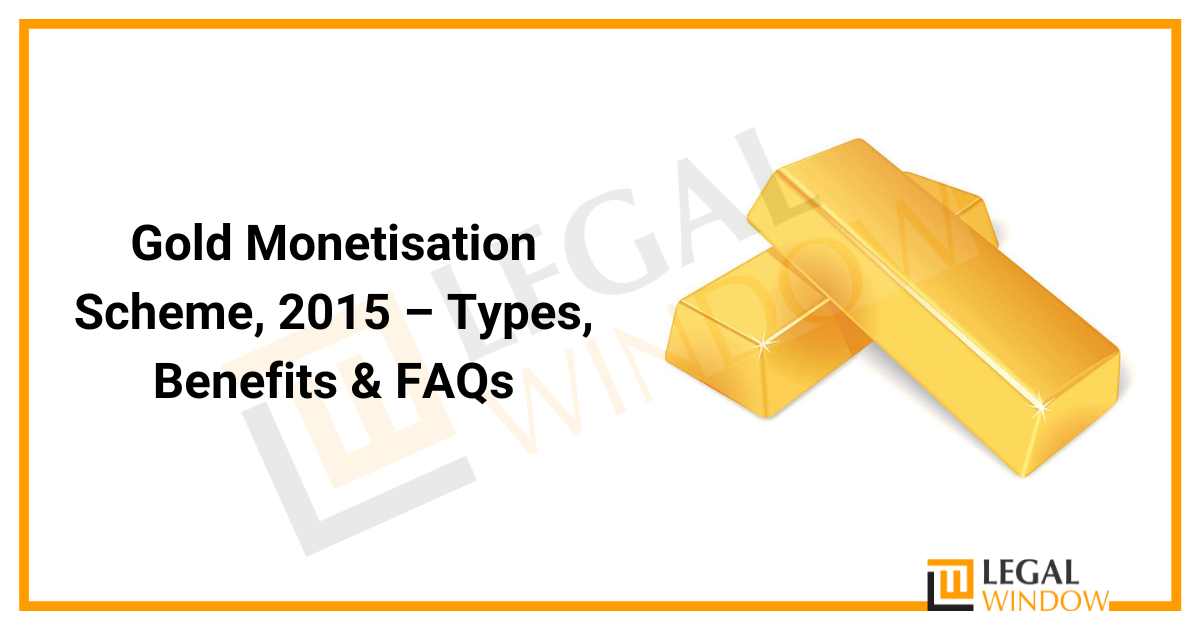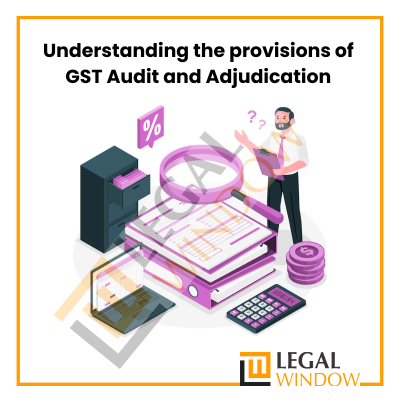 The government introduced the Gold monetisation plan in 2015 with the goal of mobilization Gold and facilitating its usage for economic purposes, which would also assist reduce India’s reliance on Gold imports in the long term. India is the world’s second-largest Gold importer. The implementation of the Gold programme will relieve the government of the burden of bearing the cost of borrowing while simultaneously supplementing the RBI’s Gold stockpile. In this article we will discuss about benefits, types and FAQs on Gold Monetisation Scheme 2015.
The government introduced the Gold monetisation plan in 2015 with the goal of mobilization Gold and facilitating its usage for economic purposes, which would also assist reduce India’s reliance on Gold imports in the long term. India is the world’s second-largest Gold importer. The implementation of the Gold programme will relieve the government of the burden of bearing the cost of borrowing while simultaneously supplementing the RBI’s Gold stockpile. In this article we will discuss about benefits, types and FAQs on Gold Monetisation Scheme 2015.
| Table of Content: |
Explanation of the Gold Monetisation Scheme
The Gold Monetisation Scheme (GMS) is a modification to the existing Gold Deposit Scheme or Gold Metal Loan Scheme. Investors can make term deposits of their idle Gold under GMS, which offers them with security and interest revenues, allowing them to reduce storage expenses while still benefiting from deposit returns.
Under the programme, Gold can be placed in any form – bars, coins, or jewellery – and the depositor has the choice of receiving cash or Gold upon redemption. At the moment of redemption, the investor will not get the Gold in the identical form in which it was placed. Investors can only withdraw their deposits in the form of cash, Gold bars, or Gold coins.
Gold Monetisation Scheme Types
The following are the types of Gold Monetisation Scheme (GMS):
- Short-term Gold investment (1-3 years)
- Long-term Gold deposit (5-7 years)
- Long-term Gold reserve (7-12 years)
Initially, the plan only allowed for individual accounts (in the form of joint or single). However, in 2019, the RBI amended the holding norms, including charity organisations and the national government. According to the RBI announcement, the plan is open to any entity owned by the state or federal governments.
The Gold Monetization Scheme combines the earlier ‘Gold Deposit Scheme’ and the ‘Gold Metal Loan Scheme,’ which have been updated and connected in GMS.
Let us discuss ‘Gold Deposit Scheme’ & ‘Gold Metal Loan’ in detail.
New Gold Deposit Scheme
The Gold is acceptable by the Bureau of Indian Standards-certified Collection and Purity Testing Centres (CPTC) (BIS). Banks provide deposit certificates with the equivalent of 995 purity Gold. The designated banks (ICICI Bank, Corporation Bank/Union Bank of India, Indian Overseas Bank, Punjab National Bank, State Bank of India, HDFC Bank, Yes Bank, Dena Bank/Bank of Baroda) accept Gold deposits under the Short Term Bank Deposit (STBD), Medium (5-7 years), and Long (12-15 years) Term Government Deposit Schemes (MLTGD). The former is accepted by banks on their own behalf, whereas the latter is accepted on behalf of the Government of India.
- Interest: The amount of interest due on short-term deposits is determined by banks based on the prevailing international leasing rates, other expenses, market conditions, and so on, and is paid by the banks. The rate of interest on medium and long-term deposits is determined by the government in collaboration with the RBI on a regular basis, and it is borne by the Central Government.
- Redemption: In the case of short-term deposits and MLTGD, the customer will have the choice of redeeming the principle at maturity in Indian rupees equal to the value of the deposited Gold at the time of redemption or in Gold. Any pre-mature redemption of MLTGD shall, however, be in INR only. In the event of STBD, any pre-mature redemption shall be made in Indian rupees or Gold at the discretion of the authorised bank. In the event of a Gold redemption, any fractional amount (for which a standard Gold bar/coin is not available) would be paid in cash.
STBD and MLTGD interest will be denominated and paid in Indian rupees exclusively.
- Tax Implication: The Central Government will notify the GMS tax consequences on a regular basis. It is stressed, however, that tax exemptions, similar to those provided under GDS, will be made accessible to customers under the revised GDS, if relevant. The enabling notices issued by the GOI in this regard are:
- Income tax exemption for interest earned on Gold deposit bonds as a result of a Finance Act 1999 change to section 10(15)(vi) of the Income Tax Act. Exemption from Wealth Tax for certain assets deposited in the plan under Section 2(e) (a) of the Wealth Tax Act as amended by the Finance Act, 1999.
- Exemption from capital gains tax on bonds realised by trading or redemption under section 2(14) (VI) of the Income Tax Act, 1961 as modified by the Finance Act, 1999.
- Furthermore, according to CBDT instructions No. 1916 dated 11th May, 1994 in the course of IT Search u/s 132, Gold jewellery to the value of 500 gms per married lady, 250 gms per unmarried lady, and 100 gms per male member of the family, need not be seized by the authorities, but the applicable tax penalties will be levied.
Redesigned Gold Loan Program
The following is included in Redesigned Gold Loan Program:
- Gold Metal Loan Account: The bank will launch a Gold Metal Loan Account for jewellers, which will be priced in grams of Gold. The Gold mobilised through the revised GDS under the short-term option would be loaned to jewellers based on the terms and circumstances determined by banks under RBI guidelines.
- Gold delivery to Jewellers: When a Gold loan is approved, jewellers will get physical Gold delivery from refiners. In response, the banks will make the necessary entry in the jewellers’ Gold Loan Account. Interest received by banks: Banks will choose the interest rate charged on the GML, with advice from the RBI.
- Tenor: The GML’s current tenor is 180 days. Given that the minimum lock-in term for Gold deposits will be one year, this tenor of GML may be re-examined in the future and suitable revisions made, if necessary.
Gold coin of India
The Indian Gold coin is a component of the Gold Monetisation Scheme. The currency is the first national Gold coin ever struck in India, and it has the National Emblem of Ashok Chakra on one side and Mahatma Gandhi on the other. The coins come in denominations of 5, 10, and 20 grams. The Indian Gold coin and bullion are one-of-a-kind in many ways, including superior anti-counterfeit measures and tamper-proof packaging. The Indian Gold coin and bullion are 24 carat purity, and all coins and bullion are hallmarked in accordance with BIS requirements.
Changes to the Gold Deposit Scheme and the India Gold Coin
The Ministry of Finance authorised revisions to the Gold Monetisation System and the Indian Gold Coin Scheme in its Office Memorandum No. 1/21/2020-FT dated 9th February 2021, with the goal of making the scheme simpler, more appealing, and more successful.
The key changes to the Revamped Gold Deposit Scheme include increasing the number of Public Sector Bank branches designated as GMS service branches in all towns, dematerialization of MTGD and LTGD Deposit Certificates to make them tradeable and mortgage able, Jewellers/Refiners to be engaged as Gold Mobilisation Agents and CPTCs, interest payment in STBD denominated and to be paid in INR terms, lowering the minimum deposit under R-GDS to 10 grams of Gold, allowing banks to purchase standard locally refined/sourced Gold from refineries and Gold Spot Exchanges, allowing interbank financing of IGDS/LBMA standard Bullion, developing the GMS Digital Platform, and using MLTGD Gold under GMS for Bullion Leasing under GML.
The significant changes to the Revamped Gold Metal Loan Scheme include the repayment of GML in lots of 1KG, the repayment of Gold loans under GML using locally obtained IGDS standard bullion, and the availability of GML to any jewellers having a valid Working Capital Credit Limit.
The key changes to the Indian Gold Coin Scheme are that SPMCIL will mint and sell IGC through an online e-commerce platform as well as multiple channels such as airports, that IGC will be available in both 999 and 995 purity, that smaller denominations will be minted, and that SPMCIL will have the flexibility to mint commemorative and other order Gold coins.
Legal Window will assist you in planning for making investment in Gold and Gold Products. Connect to our experts to know more about the Gold Monetisation Scheme.
The Advantages of a Gold Monetisation Scheme
The following are the Gold Monetisation Scheme:
- Simple and secure storage: Unlike bank lockers, the programme does not charge for the security of the investors’ Gold. Instead, the investor receives guaranteed returns and can redeem the investment in Gold or cash at maturity.
- Mobilizing Gold: One of GMS’s aims is not just to make existing programmes more successful, but also to increase the possibility for mobilising and putting Gold owned by families to productive use. The mobilisation of Gold in the domestic market would also benefit the gems and jewellery sector, which is a significant contributor to India’s exports.
- Tax advantages: Profits from the GMS programme are free from capital gains tax. This is also prolonged if the investors’ Gold value increases, and interest gains are not taxed.
- Attractive interest rates: The plan allows clients to deposit their idle Gold assets for a certain length of time in exchange for interest rates ranging from 2.22 to 2.50%.
FAQs on Gold Monetisation Scheme 2015
Q 1. Is it necessary for banks to acquire RBI clearance before participating in the Gold Monetisation Scheme, 2015?
Ans. No. Banks, on the other hand, must disclose to the RBI implementation details such as the names of the Collection and Purity Testing Centres (CPTCs) and refiners with whom they have engaged into a tripartite arrangement, as well as the branches implementing the system. Banks must also report the total amount of Gold mobilised under the plan by all branches on a monthly basis in the required format.
Q 2. Who can make a deposit?
Ans. Individuals, HUFs, Proprietorship & Partnership businesses, Trusts including Mutual Funds/Exchange Traded Funds registered under SBI (Mutual Fund) Regulations, Companies, charity institutions, Central Government, State Government, or any other organisation owned by Central Government or State Government.
Q 3. How does a consumer make a deposit under the scheme? Does interest on deposits begin to accrue on the first day of depositing Gold with CPTC/GMCTA/designated branch?
Ans. After fulfilling the KYC requirements, an eligible depositor can open a Gold Deposit Account with any of the authorised institutions. Deposits under the scheme should be made at the CPTC/GMS Mobilisation, Collection & Testing Agent (GMCTA), who will then test the purity of the customers’ Gold in their presence and issue deposit receipts of standard Gold of 995 fineness to the depositor, as well as notify the customers’ respective bank about deposit acceptance. The designated bank shall credit the customer’s Short-Term Bank Deposit (STBD) or Medium/Long-Term Government Deposit (MLTGD), as appropriate, either on the same day of deposit reception by the depositor or within 30 days after Gold deposit at CPTC/GMCTA, whichever is sooner.
Following that, interest on deposits will begin to accrue on the day of conversion of Gold placed into marketable Gold bars or 30 days following receipt of Gold at the CPTC/GMCTA, whichever comes first.
Q4. What is the minimum and maximum quantity of Gold that may be deposited under the scheme?
Ans. The minimum deposit at any one time is 10 grams of raw Gold (excluding stones and other metals) and there is no maximum deposit restriction under the plan. The amount of Gold deposited will be represented to three decimal places.
Q 5. Can a deposit be made under the programme for a period that is not covered by the Short Term Bank Deposit (STBD), Medium Term Government Deposit (MTGD), and Long-Term Government Deposit (LTGD), such as 4 years, 9 years, or 16 year?
Ans. Deposits under STBD (1-3 years), MTGD (5-7 years), and LTGD (12-15 years) can only be made during the duration mentioned. These deposits can be renewed when they reach maturity.
 Endnote
Endnote
Governments and central banks have enormous Gold reserves as a buffer against abrupt market shocks. The Reserve Bank of India has the world’s tenth highest Gold reserves. Precious metals such as Gold and silver have long played a significant part in Indian rituals, religious festivals, and marriages. In such circumstances, a Gold monetisation system may be advantageous when budgeting for a future cost. Gold has shown to provide exceptional returns on investment. Over a thirty-year period, the price of Gold has increased by 335 percent in worldwide markets. The Gold monetisation programme is a move in the right path for economic health and will pay dividends in the long term as India strives to become a world economic giant.
CS Urvashi Jain is an associate member of the Institute of Company Secretaries of India. Her expertise, inter-alia, is in regulatory approvals, licenses, registrations for any organization set up in India. She posse’s good exposure to compliance management system, legal due diligence, drafting and vetting of various legal agreements. She has good command in drafting manuals, blogs, guides, interpretations and providing opinions on the different core areas of companies act, intellectual properties and taxation.
Categories
- Agreement Drafting (23)
- Annual Compliance (11)
- Change in Business (36)
- Company Law (148)
- Compliance (89)
- Digital Banking (3)
- Drug License (3)
- FEMA (17)
- Finance Company (42)
- Foreign Taxation (6)
- FSSAI License/Registration (14)
- GST (118)
- Hallmark Registration (1)
- Income Tax (199)
- Latest News (34)
- Miscellaneous (164)
- NBFC Registration (8)
- NGO (14)
- SEBI Registration (6)
- Section 8 Company (7)
- Start and manage a business (20)
- Startup/ Registration (127)
- Trademark Registration/IPR (40)
Recent Posts
- Farmer Producer Companies-Major provisions under Companies Act April 26, 2024
- Detailed Analysis of Section 179 of the Companies Act, 2013 April 24, 2024
- Maximise Your Tax Savings: Power of Form 12BB April 23, 2024
About us
LegalWindow.in is a professional technology driven platform of multidisciplined experts like CA/CS/Lawyers spanning with an aim to provide concrete solution to individuals, start-ups and other business organisation by maximising their growth at an affordable cost.







